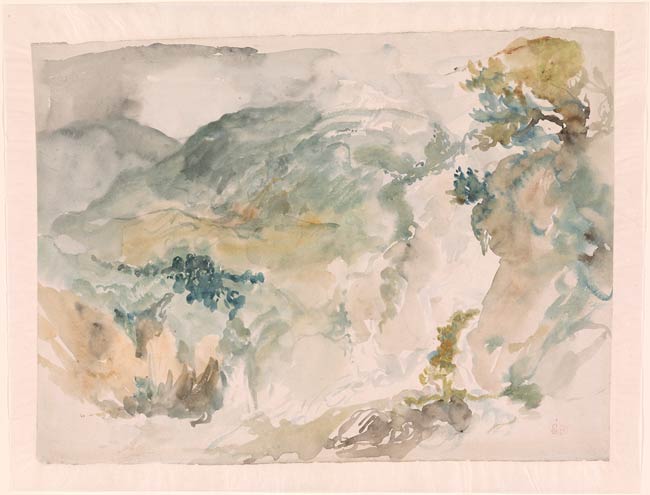
While suffering from chronic laryngitis, Delacroix left Paris in July 1845 to spend the summer in the western Pyrénées mountains to recuperate. He stayed in Eaux-Bonnes, a small spa town celebrated for its thermal waters. His time was spent hiking through the surrounding mountains, sketching torrents, cascades, and the enveloping mists in the Valley of Ossau. In addition to an album of pencil sketches and watercolors in the Louvre are a small group of watercolors executed during this sojourn.
The almost abstract composition of this sheet echoes the mountains and vegetation sketched in graphite by the artist in the Louvre carnet. As Marie-Pierre Salé observed, he made the watercolor studies in his room, using a grayish-green, brown, and gold palette. These free renderings of the rugged terrain, which was accessible by a level walking trail, constitute the largest group of pure landscapes by the artist, who was known primarily for his figurative work.
Watermark: Letters in cursive "R & C".
Watermark: Stamp of the artist's estate at lower right, “E.D” (Lugt 838a).
Strölin, Alfred, 1871-1954.
Strölin, Fred, former owner.
Calmann, Hans M., former owner.
Strölin, Fred, Mme., former owner.
Delacroix, Eugène, Salé, Marie-Pierre, and Musée Du Louvre. Eugène Delacroix, Carnet "des Pyrénées" / Marie-Pierre Salé. 2016. Musée Du Louvre. Carnets Et Albums. Etude, fig. 11.

